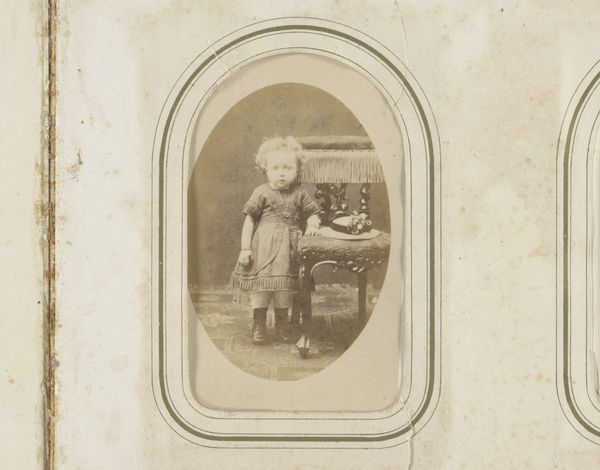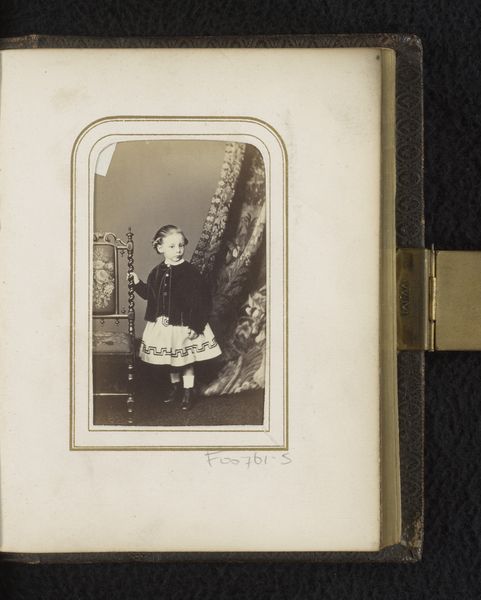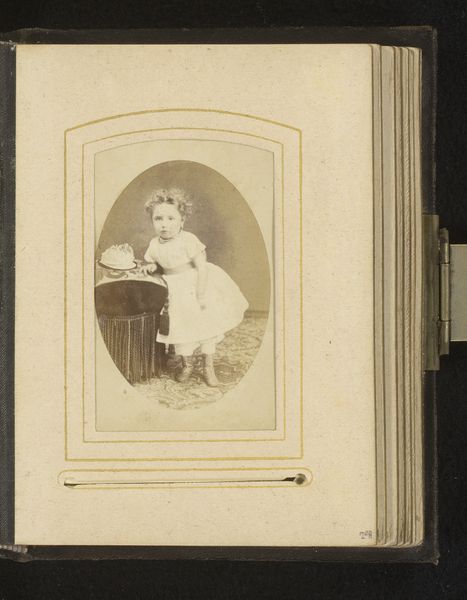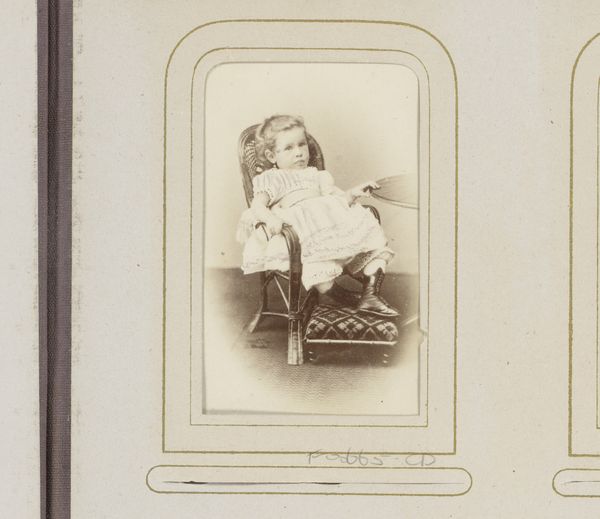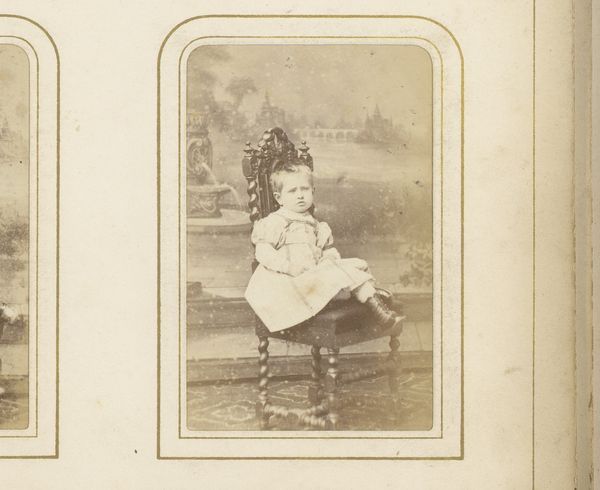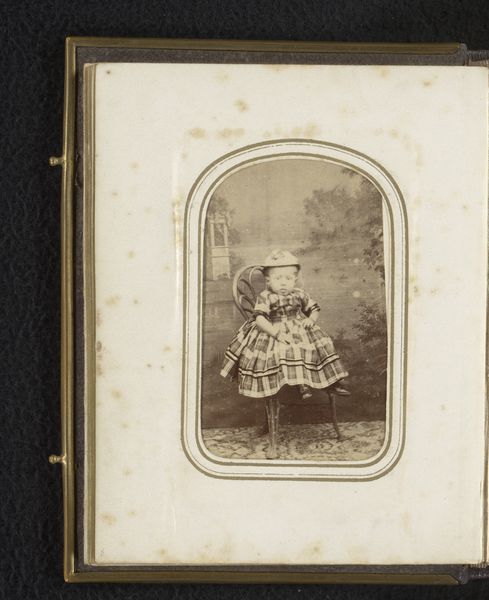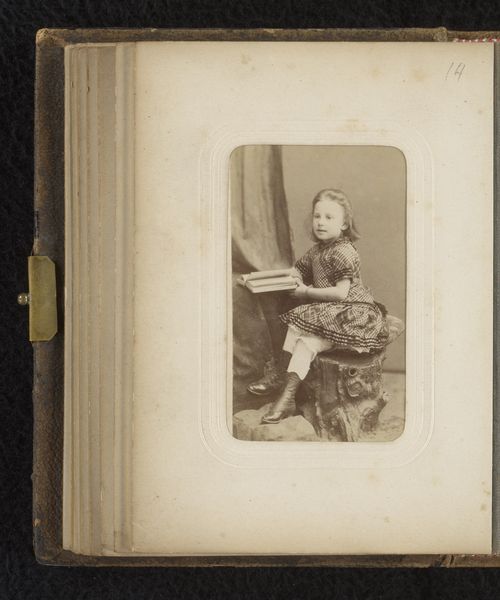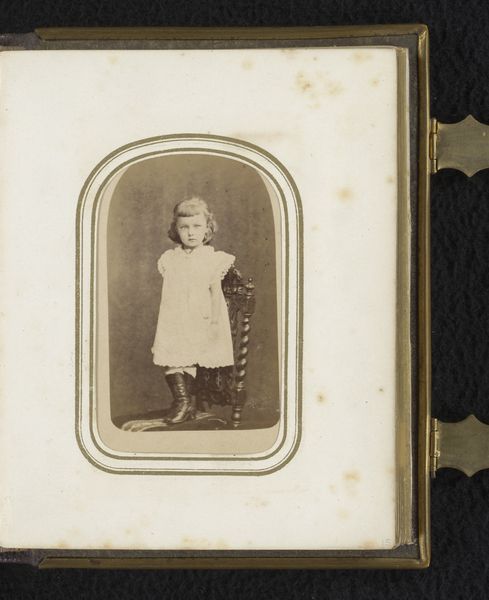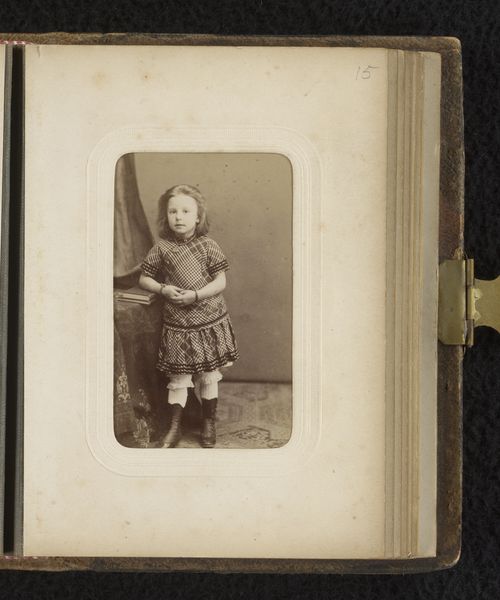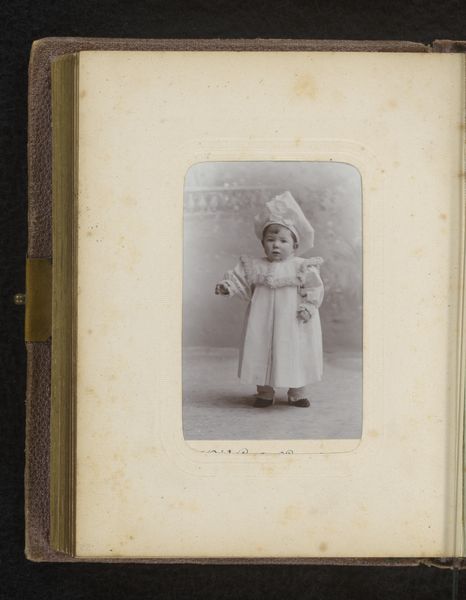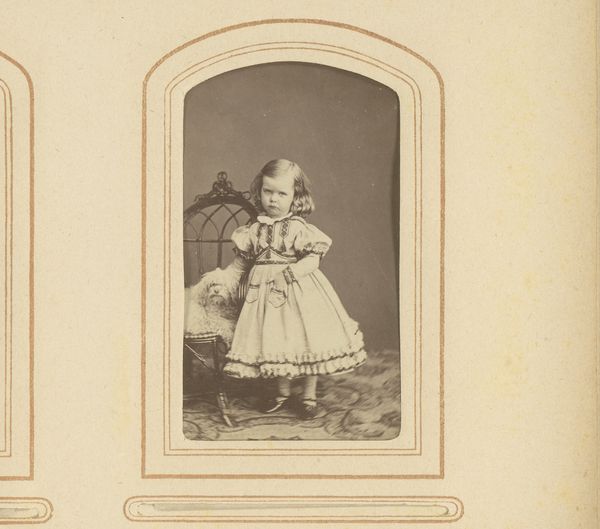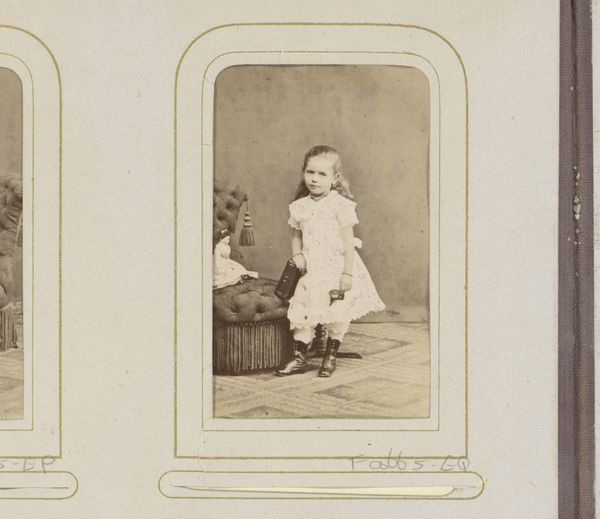
Dimensions: height 87 mm, width 51 mm
Copyright: Rijks Museum: Open Domain
Editor: This is "Portrait of a Girl with Doll, Standing by a Balustrade," dating from around 1860-1890, a photograph by S.J. Wiseman. I’m struck by the formality of the setting. She looks like she’s posing on a stage. What stands out to you? Curator: The doll is the key. Look how stiffly the child holds it, almost mirroring her own pose. In these early portrait photographs, children were often adorned with symbolic objects. Dolls, here, weren't just toys. They were stand-ins, teaching future roles—motherhood, domesticity. It’s a performance, isn't it? Editor: It definitely feels staged. And the backdrop? It seems almost dreamlike. Curator: Yes, the background suggests an idealized landscape, but it's artificial. Notice how that constructed artifice clashes with the girl's very real, somewhat hesitant gaze. She’s a real person, inserted into an unreal ideal. This contrast speaks to the cultural anxieties around childhood innocence and the pressures to conform. Do you think she seems happy? Editor: No, not really. Maybe a little uncertain? It's a lot of symbolism to unpack. Curator: Indeed. Think of the balustrade, typically used to mark boundaries, or a barrier. The symbol denotes that transition the child will make. A kind of liminal, emotional, symbolic boundary that contains the idea of her nascent adult role, separated from childhood's innocence. Photography, especially portraiture, freezes such transient moments, capturing cultural values and expectations. It serves as a marker of personal and societal aspiration, of social-historical contexts and conditions. Editor: Wow. I hadn’t considered all those layers. I definitely see the image in a new light now. Thank you. Curator: My pleasure. It’s through exploring those layers that images truly come alive, resonating across time.
Comments
No comments
Be the first to comment and join the conversation on the ultimate creative platform.
